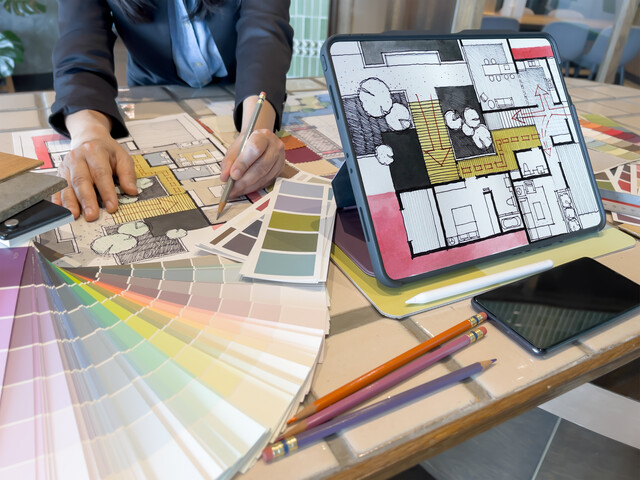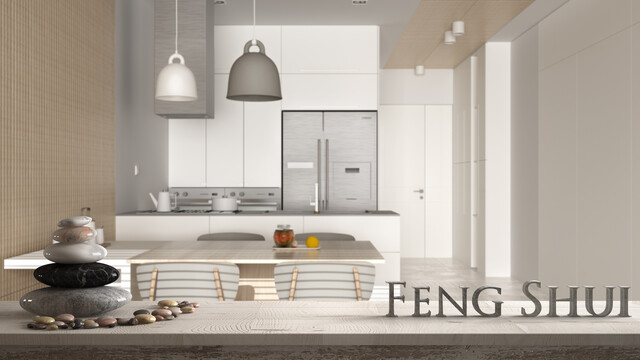Notice the neutral wall color, furniture arranged for easy walking around, clean white baseboards, a freshly laid fire, and a book cleverly left open as if someone just walked away. No personal family bric-a-brac. This room has been cleaned and accessorized and most people could see themselves living here.
This article is self-explanatory. I am going to give you a list of things to consider for each room of your house. We will start on the first floor, then the second floor (for those of you that have a two story home), and then basement, and garage. You have the checklist I gave you at the beginning of the class. We have already talked about the general cleaning, windows, and some decluttering so I am not going to mention all those things again. This article will be for things you might not have considered. I already discussed painting rooms neutral colors but do not forget the ceilings if you have the time. A fresh coat of white paint on ceilings adds value for little money and covers tiny cracks.
Tip. Now is the time to take down anything that you do not want to leave when listing the house. This way the buyer will not be confused about what is being left and what you are taking with you. It is better to take it down and replace it for the sale rather than have to argue about it later. Check with your realtor but anything attached to the house is part of the house, bookcases, light fixtures, curtains, shades, built in furniture, and an attached gas grill.
A. Entrance Hall
A welcoming entry hall. Fresh flowers, light, and no clutter.
Clean, shine, and tighten doorknobs (this goes for all rooms). Oil hinges if they squeak. Clean fingerprints from around doorknobs.
Make sure that the Main door handles are working and the screen door (if any) does not have holes and all latches are working. Clean Screens.
Replace broken or old light switches and outlet covers (all rooms).
Check to see if your doorbell is working and definitely repair it if it is not in proper working order.
Stairways. Make sure that the rails do not "wobble" and that there is not a trail of fingerprints going up the wall.
B. Hall Closet
Time to organize. Put away coats, straighten boots. You do not want things falling down on a buyer's head and you want it to look like there is lots of space. If you do not have a light, buy one of those battery ones, that you can turn on and off with a touch.
A simple organizing system and using the back of the door cleans up the clutter in this hall closet.
C. Living Room
If you have moved pictures and have not painted, be sure to fill holes and patch any other problems.
Straighten the furniture, and be sure that the cushions are plumped and smoothed.
Clean the fireplace and do not forget to use glass cleaner on both sides, if you have glass doors. Put a bowl of potpourri in the fireplace (nothing too overpowering).
A fire is welcoming if you are selling in a chilly time of year and be sure that you have information on the last time the chimney was cleaned.
Anything on the coffee tables or shelves or mantle should be neatly stacked. You might as well get used to keeping the room super tidy, as it is one less room to get ready if you have an unexpected visitor.
A "staged" front room but a great look. Fresh fruit, a couple of green plants, and the exception to neutral walls.
D. Dining Room
Keep the dining room looking spacious. Do you really need anything in the room but a table and chairs and China Closet or sideboard? This is also a room that you can maintain easily. Have a pleasing centerpiece and make sure that the chandelier is free of cobwebs and all lights are working.
E. Kitchen
This room must be immaculate and just sparkle with cleanliness. Make sure that the room is bright both with sunlight and with clean light fixtures.
If you have tile countertops, bleach and clean all the grout. Repair anything chipped.
Replace leaky faucets. Check that there are no leaks in pipes underneath your sink and clear under the sink areas, so things are visible. No fingerprints showing particularly if you have stainless steel appliances. Look at your stove hood for grease inside and out.
If you have wooden cupboards, polish with furniture polish so that they will shine.
Pantry should be organized and cleaned as well as the broom closet.
Floors should be freshly waxed, if you have linoleum.
If you have a kitchen desk, be sure that you have cleared away all personal papers. (Remember what I suggested about not having animals loose during a walk through.)
F. Bathrooms
Replace old toilet seats and make sure that every toilet is flushing perfectly. (People often flush the toilets to see if your plumbing is working.)
Check your grouting and repair or replace any missing tiles.
Buy new shower curtains and be sure there is no mildew anywhere.
Put new caulking around toilets and showers.
Take off any mineral deposit or soap deposit film on your shower doors and walls.
Organize under the sinks and medicine cabinets (yes, people will open everything). Put away anything personal or dangerous.
Check ceilings for cracks, stains, and moisture problems.
Recheck your bathroom mirrors for spotting.
G. Bedrooms
Patch walls and ceilings if during decluttering, you left a trail of nail holes.
Clean light fixtures (all over the house), replace bulbs, and be sure to put in soft white bulbs not harsh or glaring bulbs.
Ceiling fans need to be dusted and cleaned.
Clean smudgy fingerprints off walls, doors, and light switches. (These bedroom doors often are overlooked).
Nightstands emptied and organized attractively.
Although this is decorated for a baby, you can clearly see the room can easily function as a guest bedroom or office.
H. Attics
Make sure that your belongings are neatly boxed, and stacked, and people can walk around.
Clean out the cobwebs.
Replace any lights and have a flashlight handy for corners.
I. Basement. (I can hear you groaning)
In older houses, the basement challenges can seem enormous to buyers so be sure you organize, clean, and paint.
Consider whitewashing the walls and perhaps painting the floor.
Dust and clean your appliances like washers, dryers, hot water heaters, and furnace.
Do not forget basement windows, get rid of the cobwebs, and clean the windows.
Check stairways and tighten any loose railings.
If your basement is unfinished, look up, and you will probably need to clean the rafters of cobwebs.
Anything you can do to make the space look less like a dungeon will help the sale of your home.
Interior. Clean, Declutter, Repair
If you noticed, I have not suggested doing major remodeling to sell your house. Yes, you will have to replace the appliances that do not work (or get them fixed). Yes, you might have to replace broken bathroom fixtures but do not start knocking out cupboards thinking that will add value. You will not know your buyer's taste. I cannot tell you how many houses we were going to sell and I bought new curtains to freshen up the rooms and saw them out on the curb for trash pickup along with the moving boxes. Therefore, now is not the time to wallpaper, remodel the kitchen, or put in expensive wall-to-wall carpet.
This article has suggestions on the basics for your entire house, general cleaning, painting, decluttering, and organizing. Buyers want a house in move in condition and they do not want to inherit someone else's problems. (They plan to leave all those in the house that they just sold.) Neatness counts because insecure buyers think that if the house is clean the owner's surely kept up on all the maintenance.
Get those notes that you took when you went around your house or use the checklist I provided at the end of the Introduction. What follows are some of my suggestions for the most bang for your buck.
1. Interior Paint
a. Entry way and front room are your number 1 priorities. If the color is good and it just needs a fresh coat do this first thing. You do not want paint smells lingering.
I am guessing that this might be a rather small living room but with a neutral color you can see that it is hard to judge the size.
b. A house will show better if it is bright (usually white paint), but in general, neutral colors work best. If your living room is painted a strong (think overwhelming) primary color (although they are popular now) whatever primary color it is, it probably will not be the favorite of the buyers and it is hard to overlook a strong color. The buyers will have problems imagining that they could live in your space.
c. Repaint any woodwork that has been scuffed. Repaint those interior doors, if you cannot repaint at least remove the wear and tear around the handles and the scotch tape marks. A good investment is installing custom wood moldings, such as a chair rail molding or crown molding. A good quality molding is an inexpensive way to make your home look a lot better.
d. Ceilings. Yes, miserable to paint, but if your ceilings have cracks they must be filled and repainted. All prospective buyers check damage, this will hurt you on the offer, either because they will make you fix it as part of the deal or they will give a lower price because they are going to have to fix it. Bright, freshly painted ceilings are noticed. Unfortunately, popcorn ceilings are a real turn-off and can cost you if buyers think your home is dated and not worth considering. If you have the time and money, you might want to consider removing them. The process is time consuming but if you cannot afford to have it done professionally or do not want to spend the money, it is a doable project.
2. Declutter
People are looking to buy your house, not your possessions. Think of furniture as props and the room a stage. Clutter and dark colors turn off most buyers. That means getting rid of everything you can live without. (This should have been the first priority on the inside but I wanted to emphasize getting the painting done quickly.) To paint, you probably will have already started decluttering.
Wake up call. If you cannot see your baseboards your rooms are undoubtedly cluttered!
If you do not think that this counter is cluttered then you will really need some outside help in preparing your house to sell!
a. Depersonalize Your Space. Some buyers do not want to know your family roots, or look at your trophy collection, or what kind of magazines you read. Pack away the larger percent of your family pictures that are on display. The buyer will want to imagine their own family in the house. Strip that refrigerator of all those pictures and other collections, one or two is fine. It is interesting how we cannot see a jampacked refrigerator door as a problem. Now, remove obvious clues to your political, social, and yes, even religious sentiments; banners and bumper stickers all have to go.
Here is an example of a living room or family room that has had the clutter organized and the family pictures taken down to a minimum.
b. Goodwill, Church Rummage Sale, Garage Sale. Immediately, as you work your way from room to room, start sorting your stuff into giveaways, throwaways, and yard sale items. (Just think of all this as making your move easier.) Have that Garage Sale as soon as possible so you can work with a spacious house. Use the money you earn to put some of your bulkier possessions in storage.
c. Furniture. You want to clear out as much furniture as possible when you are getting ready to sell. Rent a storage unit for a couple of months, beg to use your relative's garages and basements, or have a tag sale. Master bedrooms must look like all the buyer's furniture will fit into it. Therefore, get down to just the bed and dressers if you have a smaller room. Check your front room and family room to see if the traffic patterns are unobstructed. You might want a friend or relative to help you with this because sometimes we cannot see the obvious in our own home. How many times a day do we walk around the ottoman to get to the other side of the room and not even notice?
Now here is a picture of what you do not want your space to look like when having a showing. You cannot even see the kitchen counter and the boxes are a real negative.
Tip. A good rule of thumb is to allow three feet for pathways in and out of a room. Chairs and sofas should be no more than eight feet apart (too much distance makes conversation difficult). Keep about 18 inches between the sofa and coffee table.
Establish a focal point or two. You might include the television, fireplace, a window, or an aquarium just to name a few. You must decide where you want to focus attention so you can arrange the furniture accordingly.
Tip. Do not forget the bathrooms when depersonalizing. Your brand of toothpaste, feminine products, makeup or medications should not be on display. Any prescriptions must be tucked away in a safe spot, like your jewelry and personal papers. Potential buyers will open up cabinets and pull out drawers. Always leave sink cabinets almost bare. Buyers want to look at plumbing. Waste paper baskets should always be clean and empty. Assign this task to one of your kids if that works.
These counters might be a little bare but this bathroom will not offend any buyer. All personal care products have been tucked away.
3. Cleaning
Now comes the hard stuff. The bigger challenges on your interior are spit and polish cleanliness. This is real cleaning, spring cleaning, style not just picking up toys and once over with a vacuum. I am going to state a lot of obvious things but somewhere they will probably be a few that you have overlooked, unless you are Martha Stewart.
Carpets should be clean and smell good!
Wash the windows inside and out.
I am not suggesting that everyone lives in a designer house like the one in this photo, but notice how wonderful the light is coming in through sparkling clean windows.
Wash the mirrors.
If you have wood floors clean and polish them.
Clean and empty the fireplace (wash fireplace glass).
Tip. If it is summer, fill the fireplace with candles, if it is winter, have some fresh logs and a fire going, if you will be home.
Go over the entire house and hunt for cobwebs on the ceilings and in corners.
Clean and dust all the fans and light fixtures.
Kitchens are a primary room that can make or break a sale. Clean and clear everything. If you have old vinyl tile or linoleum, I suggest you replace it. Generally, this is not a big expense. Clear those counters. You might get a large basket that you can fill with clutter whenever you know you have a house viewing appointment and stick it away in a closet.
This little kitchen is a good example of what to strive for, sparkling clean, uncluttered counters, and waxed floor.
Bathrooms must be pristine. This will be done a little closer to Open House but if you have hardwater buildup on shower stalls or tubs, and toilets, or a mold problem on tiles or your shower curtains, this could be an early project. It takes a lot of muscle to get bathrooms looking good!
Closets. If you already decluttered, you just want to organize and make them all look fantastic. Shoes matched and stored neatly, dresses, shirts, and pants all hanging in an orderly matter. Air out your closets, really vacuum the corners. It is very suspicious to have a lot of room deodorizers in the closets. Try to freshen them a little more subtly. If you have smokers in the family, the smoke smell on closet clothes is pretty overpowering.
This might be a very small closet, but with the organization and removal of seasonal clothes, you do not notice the size.
Litter boxes and other animal gear. Animals can be a redflag to buyers even if they adore them. Potential buyers are worried about carpet and floor damage, old cat smells, and scratched woodwork. A sure sign of scratches on the doors from an animal take off dollars! Clean and tuck away the litter boxes, dog toys in a basket, this goes for outside also. On my first walk through of one of our homes I did not really check the yard, but on the second walk through, I honestly thought the home had sinkhole problems because in the back of the property the dogs had dug tremendous holes. It would have taken so little effort to have filled in those holes before the walk through. You get the point.
Mildew stains and odors scare buyers, especially now that toxic, black mold is such a hot topic. Chances are you will not even get an acceptable offer if mold and mildew are present. Even if the mold in your house is the normal variety and not stachybotrys chartarum, take care of it immediately. Kill the mold and mildew and fix the source of the problem. If there is a musty smell in the basement or elsewhere, take care of it. If you suspect there are issues with radon, termites, or energy efficiency, then get your house inspected and the problems solved before you put it up for sale. Making these home improvements can help you secure a much better sale.
Tip. If you and your partner both work and can afford it, now might be the time to pay for a cleaning crew. You might also want to have a house inspection done on your dollar. The buyers will most likely be required to have a house inspection (in some states it is mandatory) and at least you will know what your problems are and have time to fix them. I have provided some links to Internet sites that can steer you to local inspectors.
This article is the start of the real work in preparing your house for sale. I have included a helpful article on cleaning solutions for your bathrooms, plus an article on organizing.
J. Garage
How I wish my garage tool storage looked like this. It did not when we bought the house and it is still on our "to do" list.
Make sure your garage door openers are working; oil everything so they open smoothly and quietly. Anything that you can do to show off storage, tool organizers, and workbench capabilities will add value.
Tip. The nose plays a part of first impressions as well as the eyes. Keep the central air filter changed (it makes no difference if it is the heating or cooling season). Filters will help with odors.
________________________________________________________

























